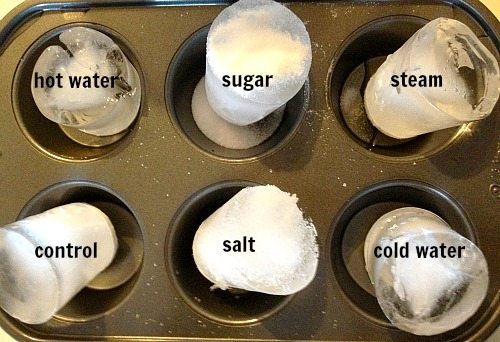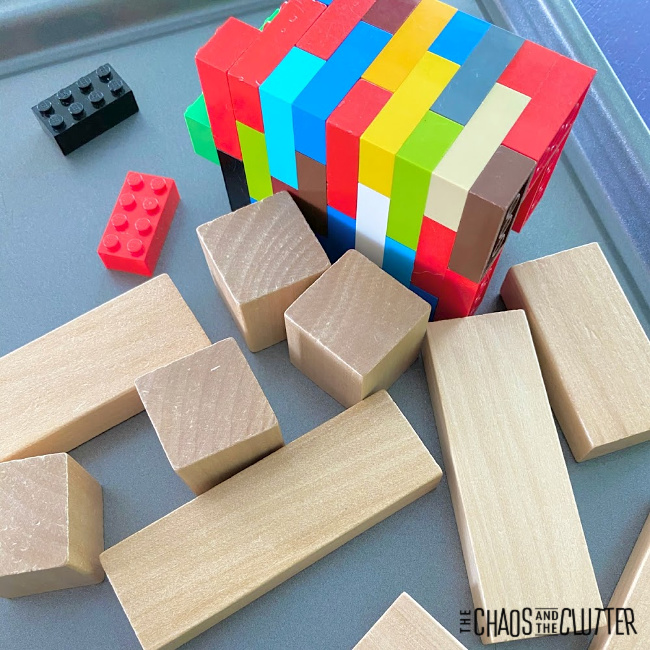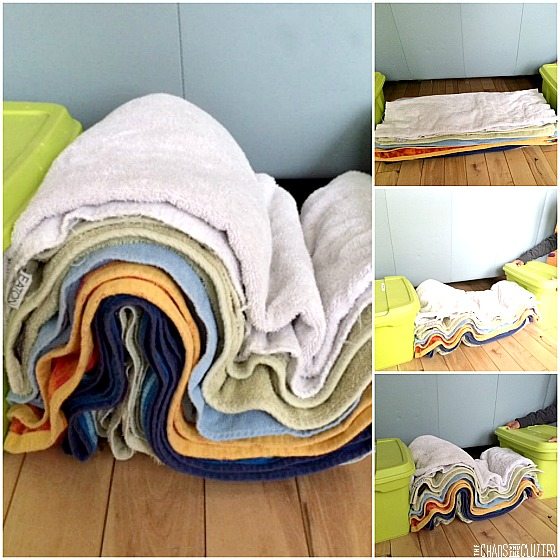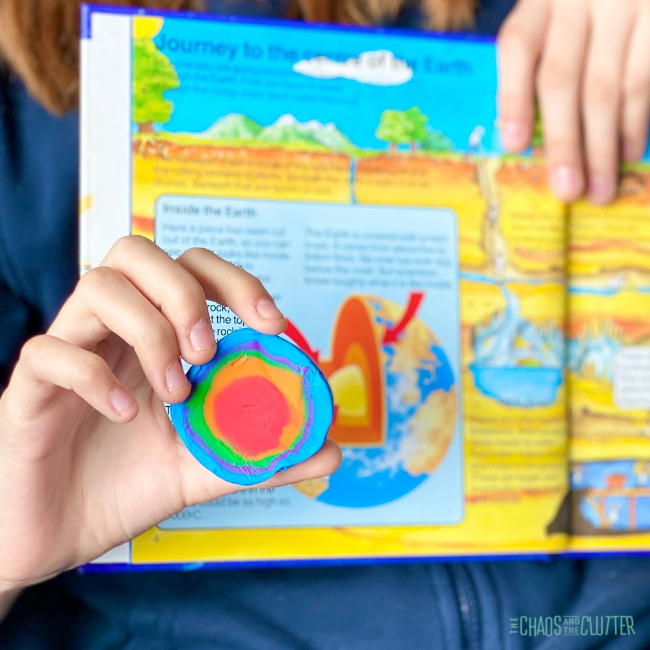A few years ago, one of our daughters decided to do the celery experiment for her science fair project. This is such an easy project for kids to do. 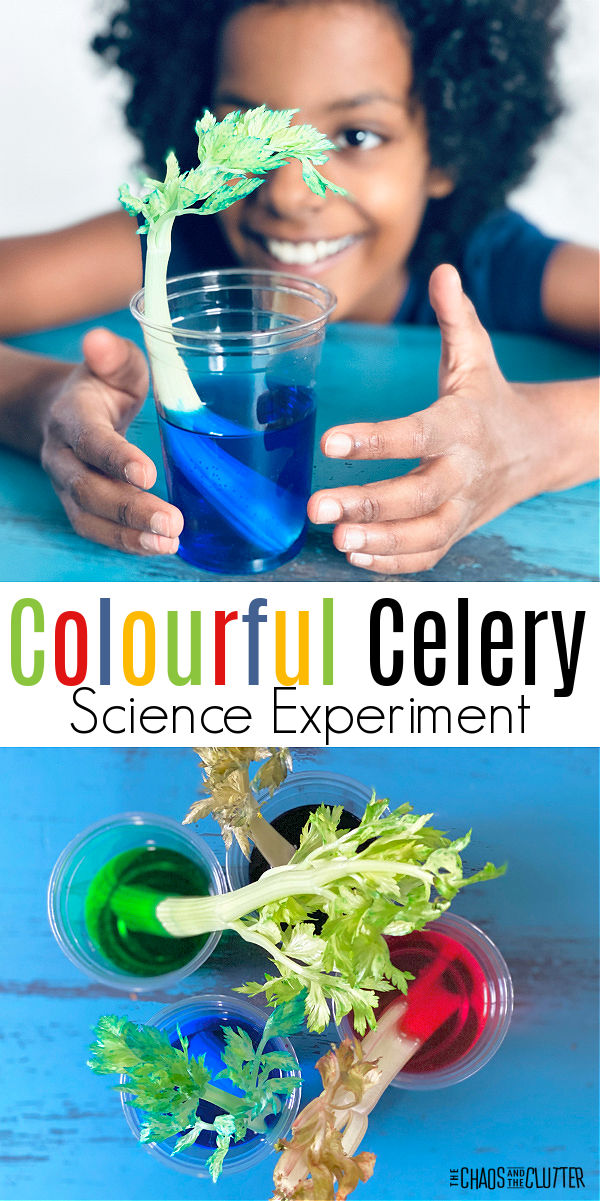 Kitchen science experiments are a great way for kids to learn. They are using materials that are familiar to them. This experiment uses celery, food colouring, and water which are all things that are familiar to most kids.
Kitchen science experiments are a great way for kids to learn. They are using materials that are familiar to them. This experiment uses celery, food colouring, and water which are all things that are familiar to most kids.
Hands on learning is so much more effective for retention. This particular experiment uses simple items that are cost effective and easy to find rather than expensive, hard-to-find materials.
Kids are able to observe the changes happening and delight in the process.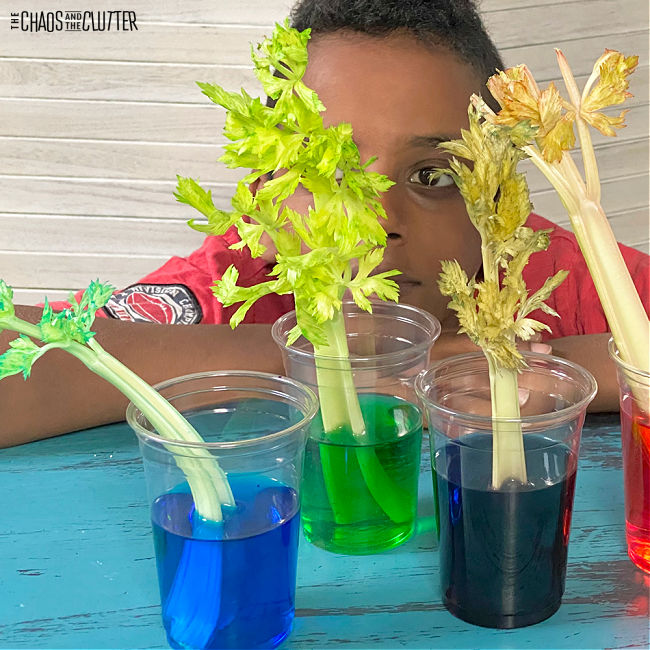
Colourful Celery Experiment:
Supplies needed:
- celery stalks
- clear cups
- food colouring
- water
Instructions:
- Fill the plastic cups a little more than half full with water.
- Add some drops of food colouring to each cup (one colour per cup) and stir.
- Cut the bottom ends off celery stalks.
- Place one freshly cut celery stalk in each cup.
- Invite kids to make a hypothesis. What do they think will happen? Depending on their age, they can colour a picture or write out what they think will happen.
- Each child can watch what happens and write or colour their observations.
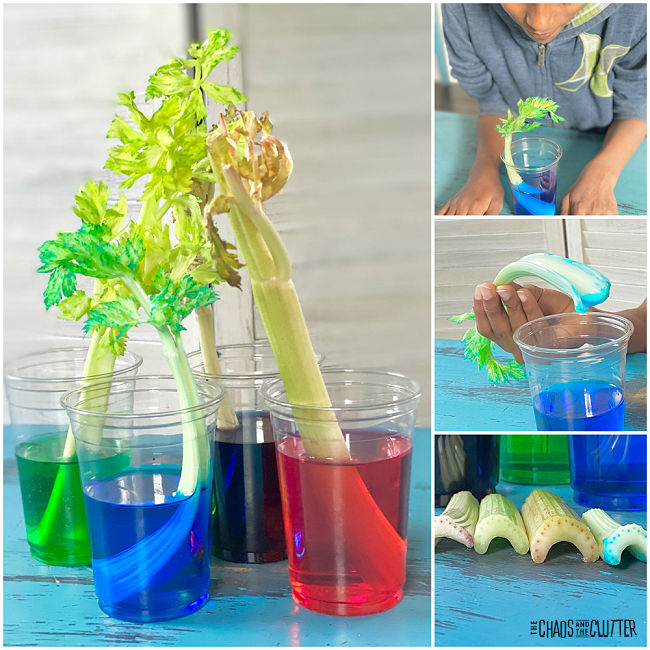 The colour will climb up the celery stalk through the capillaries which shows how plants pull up the water and nutrients. This is a great visual explanation. The results are more noticeable if you leave the leafy part on the celery.
The colour will climb up the celery stalk through the capillaries which shows how plants pull up the water and nutrients. This is a great visual explanation. The results are more noticeable if you leave the leafy part on the celery. 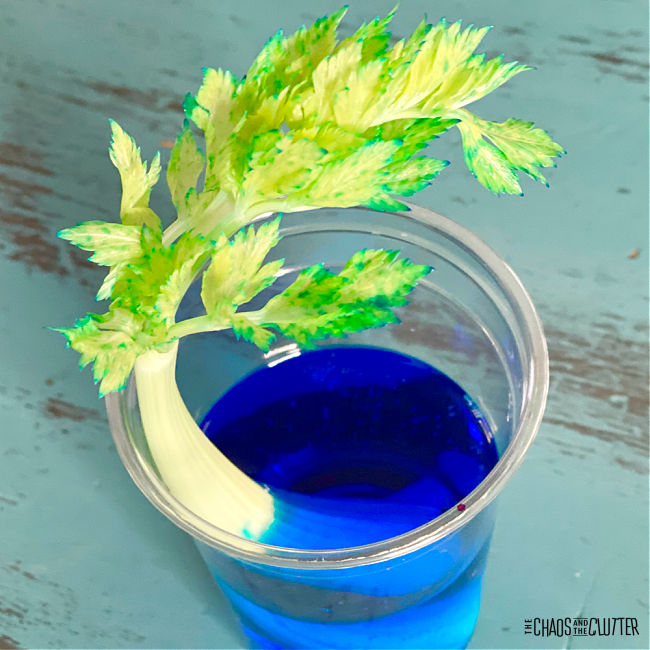 This is such an easy science experiment to do and a great visual aid for kids learning about plants and osmosis!
This is such an easy science experiment to do and a great visual aid for kids learning about plants and osmosis!
For older kids:
If you’re doing this experiment with kids who are older or are capable of a deeper understanding, you can expand the learning into how water moves from the roots in the soil to other parts of the plant or tree such as the leaves and stem. This takes place in the xylem which are vein-like tubes similar to the capillaries in the celery.
Here are some links for further research on this:
- Thirsty Plants: How Plants Get Water from the Soil to their Leaves
- Evapotranspiration and the Water Cycle
- Osmosis and Osmotic Pressure
For younger kids:
If you’re doing this with littles, you can get out a magnifying glass and take a closer look at the capillaries at the bottom of the celery. Note that they are hollow, kind of like little straws. Once the coloured water has risen in them, you’ll be able to see the colour at the entrance of the capillary.
For her science fair presentation, our daughter showed pictures of the process, wrote out the process, and drew what happened. We put all of it on a tri-fold presentation board and she was able to answer the judges questions about what she had learned through this.
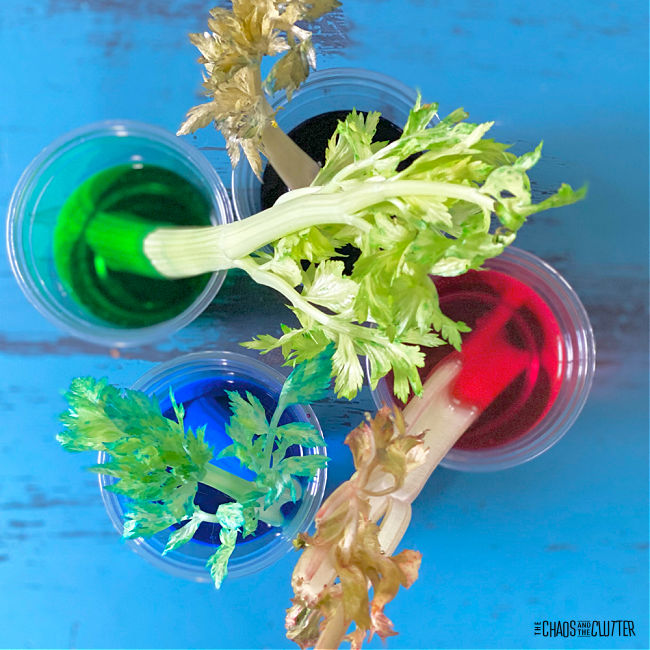 When I started homeschooling and began to incorporate hands-on science fun into our days, it made me wish that I had had the opportunity to do more of that kind of learning when I was in school. I know that many schools now recognize the importance of this and are doing experiments in the classrooms. Learning by doing is learning that lasts.
When I started homeschooling and began to incorporate hands-on science fun into our days, it made me wish that I had had the opportunity to do more of that kind of learning when I was in school. I know that many schools now recognize the importance of this and are doing experiments in the classrooms. Learning by doing is learning that lasts.
Check out some of our other awesome science activities:
